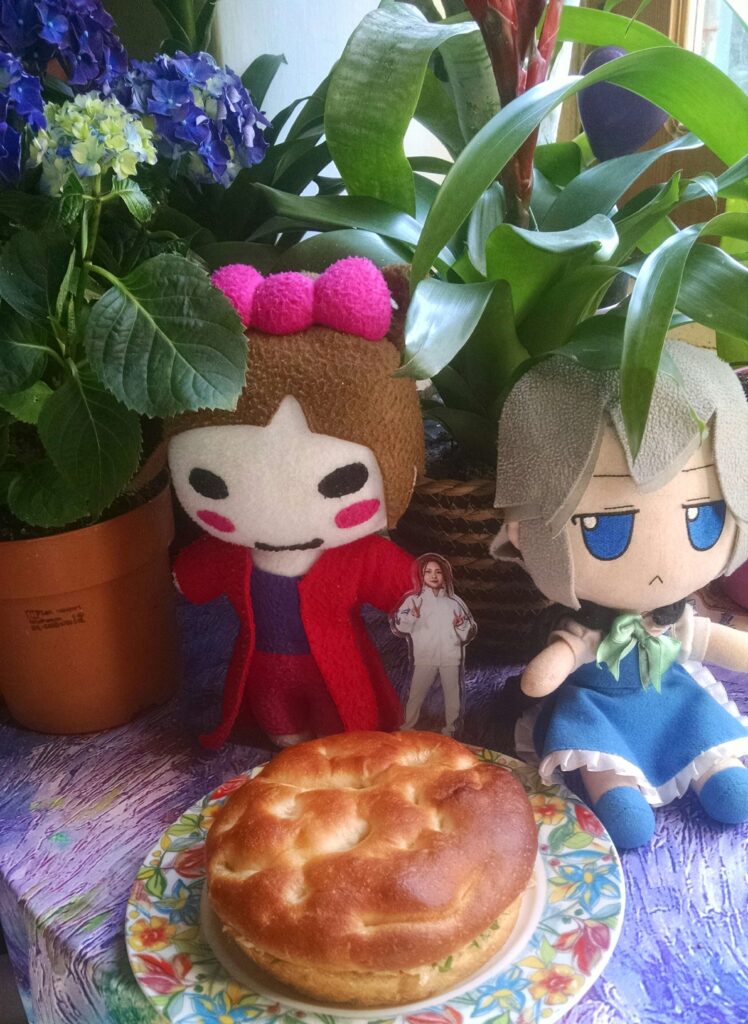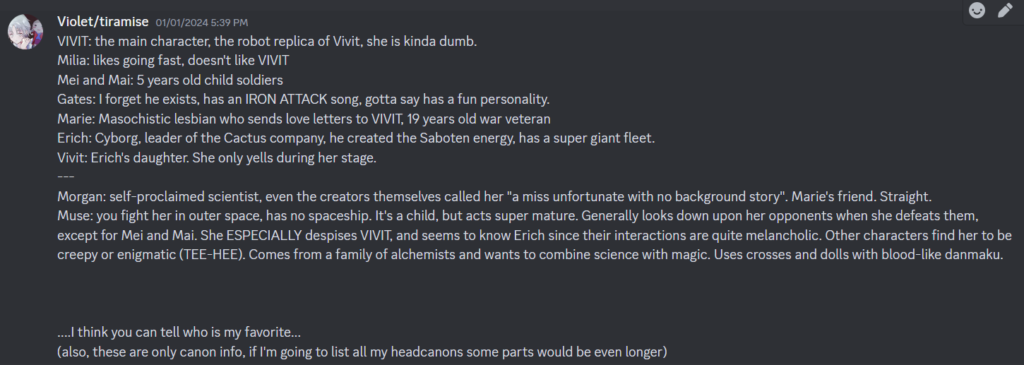It’s Ranko’s birthday!! Happy birthday 💜💜💜

This might be easily treated as a sequel to last year’s post. BUTAOTOME’s latest album features a song that entered in my top 10 Ranko lyrics: Tamashii Asobi. I have a lot to say about the lyrics of this song, and today I want to give them a deep (…) analysis.
Disclaimer: the following post is my own interpretation and might not match Ranko’s original idea.
First of all, Tamashii Asobi is an arrangement of Mahou Shoujo Juujigun/Magical Girls Crusade. There are two distinct version of the song: the first one is the original version, used in Seihou Shuusou Gyoku as Erich’s theme, and the second one is a rearranged version, used in Ghostly Field Club. They do still have basic melody elements in common, so it’s not like we are talking about two different songs.
Although Itoyuyushi is first and foremost a Perfect Cherry Blossom and Ghostly Field Club anniversary album with Renko and Merry on the cover, I think Tamashii Asobi is a Seihou song. Sure, perhaps it wouldn’t fit the album, but I believe the lyrics are written in a way that can be read either as Hifuu or as Seihou, or even a song that tries to bridge the two worlds. These lyrics have a sci-fi vibe (which fits both settings), so I suppose any interpretation is fine.
Seihou is one of those things that most people discover through Touhou (or through lost media, because of Frontal Attack). In my mind, it’s both an extension of Touhou (the Gyoku games offer some Reimu/Marisa/Yuuka content, and most people arrange the OST of those two games because ZUN made them), and also its own thing (due to its general settings of an Earth in the far future). Although, personally, I’m only invested in Muse’s character. While I do have headcanons about some other characters, in the end everything revolves around the alchemist who deserves her Buta song. Still, I’m always happy to see arrangements of ZUN’s deep cuts.

Now, let’s move to Tamashii Asobi‘s lyrics. I interpret it as a Seihou song because it uses words that, while they could fit the general Hifuuverse (such as Schrodinger), would be much more fitting in the world of the cactus energy. They are mainly terms from Greek mythology and Christian religion, which are barely covered in Renko and Merry’s adventures, but have more explicit references in Seihou (not to mention that these are basically Western cultures…).
“How far will they go in this unprecedented tragedy?”
The unprecedented tragedy could be what brought Earth to the status of losing most vegetation and having to rely on cactus energy, or even the incident that took Vivit away from Erich.
“Where can I meet you? In Hades?
Oh my, bon voyage!”
Hades is the Greek god of the dead (not the one of death), as well as the name of the underworld itself.
Usually, Japanese lyrics would use 黄泉 (yomi) or 冥界 (meikai) to refer to the realm of the dead.
Perhaps the most famous myth about a journey into Hades to save someone is the one of Orpheus and Eurydice (Orpheus was the son of one of the Muses, HHHHHHHHHHMMMMM :muse_thinking: )
“In the dead of night with no sign of life, Tartarus is below us
If you don’t keep your composure, you’ll lose”
Tartarus is the tower in Persona 3 a great pit located even further down below Hades, and where the Titans were imprisoned. It was later reimagined as a prison of suffering (either momentary or eternal) for wicked souls.
“It could be the 13th myrrhbearer
In the multiverse, anything is possible, and goes toward a changing future”
The myrrhbearers were close followers of Jesus who also witnessed his death. Depending on the source, they were directly involved in Jesus’ burial or discovered his empty tomb following his resurrection. They were also tasked to inform the Apostles about it, so they are sometimes referred to as “equal to the Apostles”.
Although there were several myrrhbearing women, their exact number is unknown, and not all their names were known. Here I assume that there was a myrrhbearer for each Apostle, who were twelve. The biblical texts never mention a 13th Apostle, but some people consider Matthias (who was chosen to replace Judas after his betrayal and death) to be that.
With the power of the multiverse, there could be an actual 13th one. Or the Apostles and Myrrhbearers could be swapped!
“From ~, Schrodinger”
The name Schrodinger by itself makes me think of his cat paradox, and the concept of something that is both alive and dead.
In the context of Shuusou Gyoku’s story, it makes me think of Vivit in the final stage, who is trapped into another dimension and also gets an angelic nude form.
On another note, I like how the lyrics use homophone words in the refrain (suijaku, tokushin). The namedrop of schadenfreude (AKA being happy that someone else is not having a good day) is also fun.
…aaand that’s all for this post. I have to admit, it doesn’t feel like a “Ranko bday post,” but I wanted to talk about Tamashii Asobi‘s lyrics without hijacking the main Itoyuyushi review. And since Ranko wrote them, I thought it would have been good to publish this today! Once again, happy birthday to her, and hope she will deliver even more great lyrics in the future (and songs, of course)!